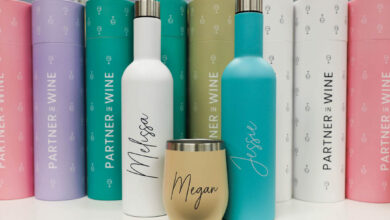Test, test, and test some more. It’s best to experiment with a variety of print settings including dot-size, resolution, color profile, and UV lamp intensity. If you have spare samples for test printing, it will help you decide on the optimal settings before the final product is produced. If you’ve only got one shot, you can cover the product with a transparent film and do a test print to ensure color accuracy and proper imprint placement on the product before the final print run.
If using a non-porous substrate such as metal or glass, a wipe-on adhesion promoter is usually necessary to prime the surface before printing. If you have an oddly shaped product to decorate, you may need to improvise and find ways to position the product on the flatbed in a way that provides a stable print surface if no custom jig is available.



